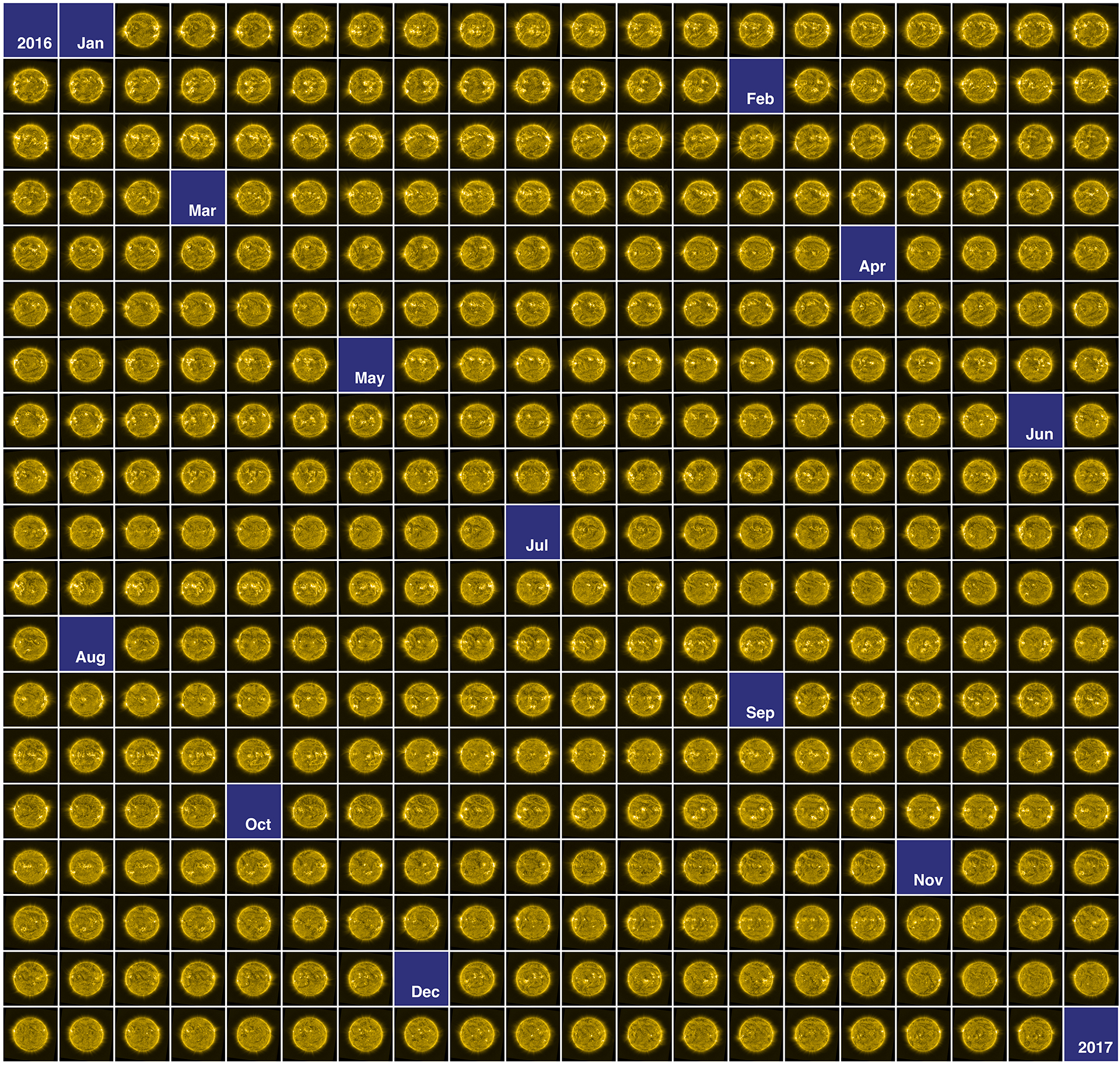
PROBA2 is a relatively small, low-cost satellite that’s packed with five scientific instruments and new space technologies for ESA to test and validate.
ESA captured the Sun’s images using a small telescope called SWAP (Sun Watcher using Active Pixel System detector and image Processing), which images the Sun’s chaotic atmosphere at extreme ultraviolet wavelengths. Each image in the calendar is actually composed of 30 separate images that have been combined and enhanced.
The Sun is currently nearing the end of its 11-year solar magnetic activity cycle, at which point the number of sunspots, solar flares, and eruptions decrease. “The current 11-year-long solar cycle moved further towards its minimum during 2016, showing fewer and fewer active regions…solar flares and turbulent activity in general,” Anik de Groof, ESA Liaison Scientist, told Digital Trends. “However, also in a relatively quiet year as 2016, some of these active regions gave rise to very dynamic phenomena.” July 17, for example, saw eight of the 20 most powerful solar flares last year.
Dark spots known as coronal holes can also be seen throughout the calendar. These regions occassionally present the source region of solar winds but they typically indicate lower emission zones.
Powerful solar winds create magnetic shock waves that can cause geomagnetic storms on Earth, disturbing Earth’s magnetic field and potentially knocking out communication, navigation, and electrical systems. One study suggests World War III was nearly sparked by a solar flare. And experts predict that if the 1859 solar storm occurred today, it could do billions of dollars worth of damages on Earth.
To that end, PROBA2’s instruments all monitor space weather. SWAP and LYRA (Large Yield Radiometer) image the Sun directly while the other three instruments measure space plasma properties that might influence Earth.



